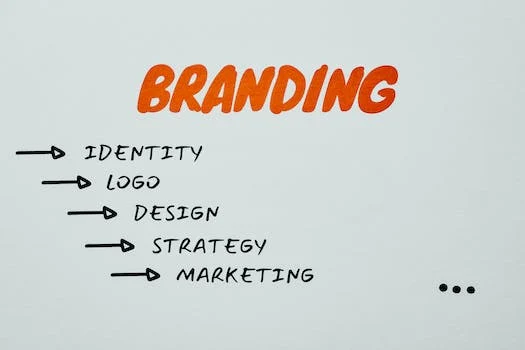Introduction: Understanding the Concept of Branding
Branding is a critical aspect of any business, giving it a unique identity and creating a memorable impression on consumers. It’s more than just a logo or a catchy tagline; it’s a combination of design, messaging, and experience that sets a company apart from its competitors. In essence, branding is the perception that people have about your company, product, or service. One crucial component of successful branding is consistent design. This blog post will delve into why consistent design is vital in branding, how to achieve it, and its impact on your business. Stay tuned to understand how you can leverage the power of consistent design to enhance your brand image.
The Crucial Role of Design in Branding
Design plays a pivotal role in branding, acting as the visual voice of your brand. It’s not just about making things look pretty; it’s about creating an identity that resonates with your target audience. Consistent design across all platforms helps to build brand recognition, fostering a sense of trust and familiarity among consumers. From the colors and fonts used to the logo and imagery selection, every design element should be carefully chosen and consistently applied to reflect the brand’s personality and values. In essence, effective design is not just aesthetically pleasing—it’s a powerful tool that can significantly impact a brand’s success.
Defining Consistent Design and Its Importance
Consistent design is a critical aspect of effective branding. It refers to the uniform use of logos, fonts, colors, and messaging across all marketing platforms and materials. This includes your website, social media, emails, and even physical marketing materials like business cards or flyers. The importance of consistent design lies in its ability to create a strong brand identity that is easily recognizable and memorable to your target audience. When your design elements are consistent, they shape a clear image of your brand in the minds of your customers, fostering trust and loyalty. In essence, consistent design is a powerful tool that can significantly enhance your brand’s visibility, credibility, and overall market presence.
The Impact of Consistent Design on Brand Recognition
Consistent design plays a critical role in brand recognition. When a brand maintains uniformity in its design elements like colors, logos, fonts, and images across all platforms, it creates a cohesive and familiar experience for the audience. This consistency makes the brand instantly recognizable, strengthening its identity in the crowded market. It’s not just about aesthetics; a consistent design helps build trust and reliability with consumers. Hence, businesses should prioritize maintaining design consistency to enhance their brand recognition and boost customer loyalty.

How Consistent Design Influences Customer Loyalty
Consistent design plays a crucial role in shaping customer loyalty. When your brand maintains a consistent look and feel across all platforms, it becomes more recognizable and memorable for customers. This familiarity builds trust, making customers more likely to stick with your brand for their future needs. A reliable and predictable design helps customers navigate through your product or service easily, enhancing their overall experience. Ultimately, a positive user experience, fostered by a consistent design, paves the way for customer loyalty and repeat business.
The Role of Consistent Design in Delivering a Clear Message
Consistent design plays a pivotal role in conveying a clear message about your brand. It’s not just about aesthetics, it’s a form of communication with your audience. When your design elements such as color scheme, typography, and logo are consistent, it creates a sense of familiarity and trust. It tells your audience who you are, what you do, and what sets you apart from the rest. Consistency in design helps to reinforce your brand identity, making it easily recognizable and memorable. In a nutshell, a consistent design is like a visual language that speaks volumes about your brand without saying a word.
Case Studies: Successful Brands with Consistent Design
Case studies of successful brands such as Apple, Coca-Cola, and Nike clearly illustrate the importance of consistent design in branding. Apple’s simple yet sleek design philosophy is evident in all their products, marketing materials, and even retail stores. Coca-Cola has maintained its distinctive red and white color scheme and classic logo for years, making the brand instantly recognizable worldwide. Similarly, Nike’s iconic swoosh symbol and “Just Do It” slogan are consistently used across all platforms. These brands have harnessed the power of consistent design to create a strong, recognizable identity that resonates with their target audience and sets them apart from their competitors.

Common Pitfalls to Avoid in Maintaining Design Consistency
Maintaining design consistency can be a challenging task, especially when dealing with multiple platforms. One common pitfall to avoid is the lack of standardization. This usually happens when your brand elements such as logos, colors, fonts, and images change frequently across different platforms. Another pitfall is inconsistency in the quality of images and graphics used. High-resolution images on one platform and low-quality ones on another can harm your brand’s image. Lastly, avoid inconsistency in your messaging. The tone, language, and style of your brand’s communication should remain uniform across all platforms. Overlooking these pitfalls can lead to a disjointed brand image, confusing your audience and diluting your brand’s impact.
Practical Tips on How to Maintain Design Consistency in Branding
Maintaining design consistency in branding is crucial in creating a strong and recognizable brand identity. The first practical tip is to create a comprehensive style guide. This guide should detail everything from your logo usage, color palette, typography, to imagery style. Not only does it ensure consistency, but it also serves as a reference for future design decisions. Secondly, consistency in messaging is as important as visual consistency. Ensure your brand’s voice and tone remain the same across all platforms. Lastly, regular audit and review of your brand’s design elements are necessary. Changes and evolution are part of a brand’s life, but they should not compromise the consistency of the brand’s design.
Conclusion: The Long-Term Benefits of Consistent Design in Branding.
In conclusion, employing consistent design in branding has far-reaching benefits in the long run. It not only aids in creating a strong brand identity but also fosters trust and loyalty among customers. By presenting a unified and consistent image, businesses can ensure their brand is easily recognizable, which can lead to increased awareness and customer retention. In essence, consistent design is a powerful tool that can help a brand stand out in a crowded market, build a solid customer base, and ultimately drive business success.


